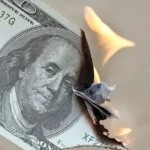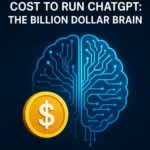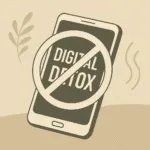Prostate cancer is the second most frequently diagnosed cancer in men worldwide, with approximately 1.2 million new cases each year. Wikipedia
Imagine feeling perfectly normal one day, only to find out later that a silent disease has been growing inside you for years. That’s the quiet danger of prostate cancer—a condition that affects millions of men worldwide and often shows no symptoms until it’s advanced.
The topic made headlines again in 2025 when U.S. President Joe Biden announced he had been diagnosed with an aggressive form of prostate cancer at the age of 82. It was a sobering reminder that this common men’s health issue doesn’t discriminate—age, power, or status doesn’t shield anyone from its reach.
So, what exactly is prostate cancer? How does it develop? And more importantly—what can you do to prevent or catch it early? Let’s break it down in simple terms.
Table of Content
- What Is Prostate Cancer?
- Why Does It Happen?
- Symptoms to Watch For
- What We Learned from Joe Biden’s Diagnosis
- How to Protect Yourself
- What If You’re Diagnosed?
- The Bottom Line
What Is Prostate Cancer?
The prostate is a small, walnut-shaped gland located just below the bladder. It’s part of the male reproductive system and helps produce the fluid that carries sperm.
Prostate cancer occurs when cells in the prostate begin to grow uncontrollably. While some types grow slowly and remain confined to the gland, others can be aggressive and spread quickly to bones or other organs.
Here’s the tricky part: in its early stages, prostate cancer typically shows no symptoms. That’s why it’s often called a “silent disease.”
Why Does It Happen?
About 1 in 8 men will be diagnosed with prostate cancer during their lifetime. ZERO Prostate Cancer
Doctors don’t fully know what causes prostate cells to turn cancerous, but there are some clear risk factors:
- Age – Risk rises significantly after 50.
- Family history – Having a father, brother, or son with prostate cancer doubles your risk.
- Race – African-American men are more likely to get prostate cancer and to develop it at a younger age.
- Genes – Certain inherited mutations (like BRCA genes) linked to breast and ovarian cancer also raise prostate cancer risk.
Lifestyle factors like obesity, poor diet, and lack of exercise may also play a role—but the science is still evolving.
Symptoms to Watch For
Most men won’t feel anything wrong until the disease is advanced. But when symptoms do appear, they may include:
- Difficulty urinating or weak urine flow
- Frequent need to pee (especially at night)
- Pain or burning during urination
- Blood in urine or semen
- Persistent pain in the lower back, hips, or pelvis
These can also be caused by other conditions—so don’t panic, but do see a doctor if you notice them.
What We Learned from Joe Biden’s Diagnosis
It is also the second leading cause of cancer death among men globally. Cancer Research UK
In May 2025, President Biden’s medical team revealed that he had been diagnosed with Grade Group 5 prostate cancer—a highly aggressive form that had already spread to his bones. Despite the seriousness of the diagnosis, the cancer was still hormone-sensitive, meaning it could respond well to treatment.
His story highlights a key lesson: prostate cancer can be hidden, even in someone receiving regular health checks. It’s why discussions about screening and early detection are more important than ever.
How to Protect Yourself
While we can’t guarantee prevention, there are smart ways to lower your risk and catch problems early.
1. Talk to Your Doctor About Screening
The most common early detection tool is a PSA blood test, which checks for a protein made by the prostate. It’s not perfect, but it’s helpful.
Experts suggest men begin talking about screening at:
- Age 50 if you’re at average risk
- Age 45 if you’re high risk (African-American or family history)
- Age 40 for very high risk (multiple relatives with early prostate cancer)
Screening is a personal choice. Your doctor can help you weigh the pros and cons.
2. Eat for Your Prostate
- Add cruciferous veggies (broccoli, cauliflower, cabbage) – they contain natural cancer-fighting compounds.
- Eat cooked tomatoes (lycopene) – it may help protect the prostate.
- Choose lean proteins, whole grains, and healthy fats (like nuts and olive oil).
- Avoid highly processed foods, red meat, and sugary drinks.
3. Move Your Body
Regular exercise helps maintain a healthy weight, balance hormones, and boost immunity—all of which can reduce cancer risk.
What If You’re Diagnosed?
If you do get diagnosed, don’t assume the worst. Many men live long, full lives after treatment.
Treatment depends on the stage and aggressiveness of the cancer:
- Active surveillance for low-risk cases
- Surgery or radiation for localized tumors
- Hormone therapy, chemotherapy, or newer drugs for more advanced stages
New treatments like PSMA-targeted therapy, PARP inhibitors, and even cancer vaccines are showing great promise, giving hope to men with advanced disease.
The Bottom Line
Prostate cancer doesn’t shout. It whispers—or stays silent altogether. That’s why awareness is power.
Joe Biden’s diagnosis was a wake-up call to men everywhere: check in on your health before it checks out on you. Whether it’s talking to your doctor, changing what’s on your plate, or simply knowing the risks, small steps can lead to big protection.
Your prostate may be small, but its impact on your life is anything but.




























Leave a Reply